Natural blue food coloring is easy to make at home. You only need 2 ingredients: red cabbage and baking soda! So bring some color into your life and naturally dye your food blue – no one will believe that you used red cabbage to achieve this incredible blue color!
I wanted to make natural blue food coloring made with red cabbage for a long time and now I finally made it! Yay, I’m so excited! I put together a tutorial so that you can make natural blue food coloring too. You can use natural blue food coloring to color ice cream, cake, frosting & icing, drinks, pasta, fried eggs … (recipes below)
If you’re wondering if food colored with red cabbage food coloring doesn’t taste of red cabbage. 😉 No, if you don’t use to much natural blue food coloring to dye the food. Neither the blue cookies nor the blue milk nor the blue pasta tasted of red cabbage.
Homemade Natural Blue Food Coloring With Red Cabbage
Ingredients:
- 1 head of red cabbage
- about 1/4 tsp baking soda
Directions:
Cook The Cabbage
Slice the red cabbage into strips. Put the sliced cabbage into a large pot, half cover it with water and bring to a boil. Reduce the heat and continue to simmer the cabbage for about 15 minutes.
Strain out the red cabbage. Use the red cabbage for another recipe.
Simmer the purple water for another 15 – 30 minutes until the consistency of the natural blue food coloring is thick and syrupy.
Add Baking Soda
Add baking soda a little at a time to turn the purple liquid into blue. It will foam up when you add the baking soda.
Don’t add more than 1/4 tsp baking soda or the natural blue food coloring will taste salty and not very pleasant!
Test The Color
Because homemade natural blue food coloring is so dark, use some milk, soy milk or yogurt to test the color.
How To Store Homemade Natural Blue Food Coloring
It’s best to use the food coloring when it’s fresh or freeze it. Homemade natural blue food coloring doesn’t keep very long in the fridge: The cabbage taste becomes more pronounced after some days!
How To Use Natural Blue Food Coloring
Now have fun with your homemade natural blue food coloring! I made blue icing with powdered sugar, water and blue food coloring. If you add more blue food coloring, the icing is dark blue like the cookie on the right, if you add less blue food coloring it’s turquoise like the cookie on the left.
Red Cabbage Taste
It’s best not to use too much red cabbage dye or the food (especially drinks and ice creams) might taste of red cabbage. If a food you dyed tastes of red cabbage, you can mask the taste with essential peppermint oil, homemade vanilla extract or rum. But it’s safe to dye icing, sugar & fried eggs dark blue (recipes below) – I’ve often made it and they’ve never tasted of red cabbage.
If you need a dark blue natural food coloring and are worried about the red cabbage taste, you can use butterfly pea tea instead.
Related: Dark Blue Mirror Glaze – Dairy-Free, No Corn Syrup & Colored With Butterfly Pea Tea
PH-Sensitivity Of Natural Blue Food Coloring
Natural blue food coloring is ph-sensitive: If you color an alkaline food, it’ll be blue. If you add it to an acidic food (e.g. lemon juice), the blue food coloring will change back to purple or even pink. You can use the ph-sensitivity to make your own ph indicator! I used the natural blue food coloring to test the ph level of the ingredients for my natural blue cake experiment.
Related: Blue Lemon Ice Cream – Colored With Butterfly Pea Tea
Recipes With Homemade Natural Blue Food Coloring
Drinks
Candy & Desserts
Ice Cream
Cake
Cookies
Savory Recipes
More Homemade Natural Food Dyes
More Uses For Red Cabbage
Please Pin It!
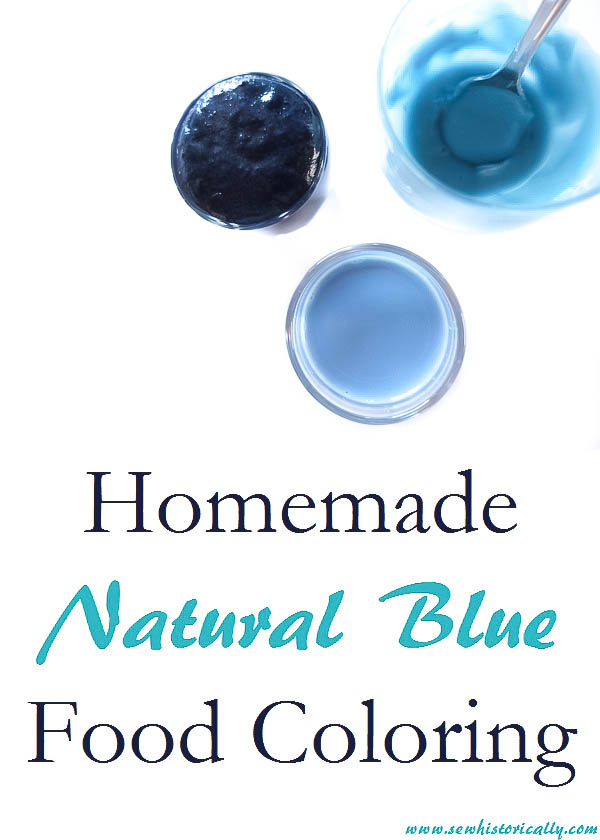
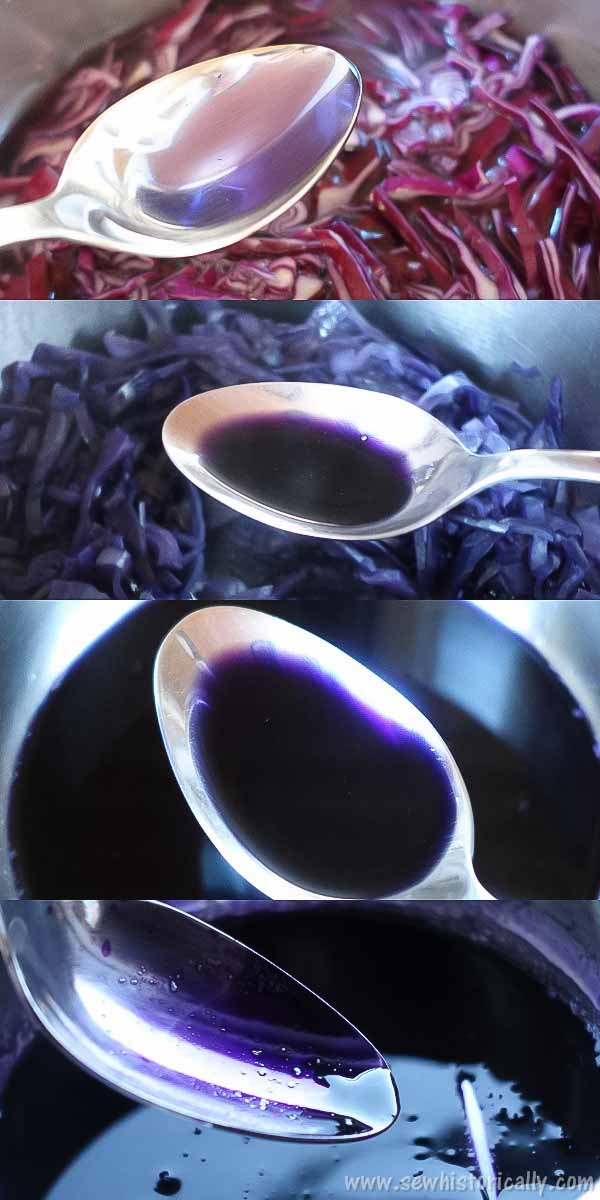
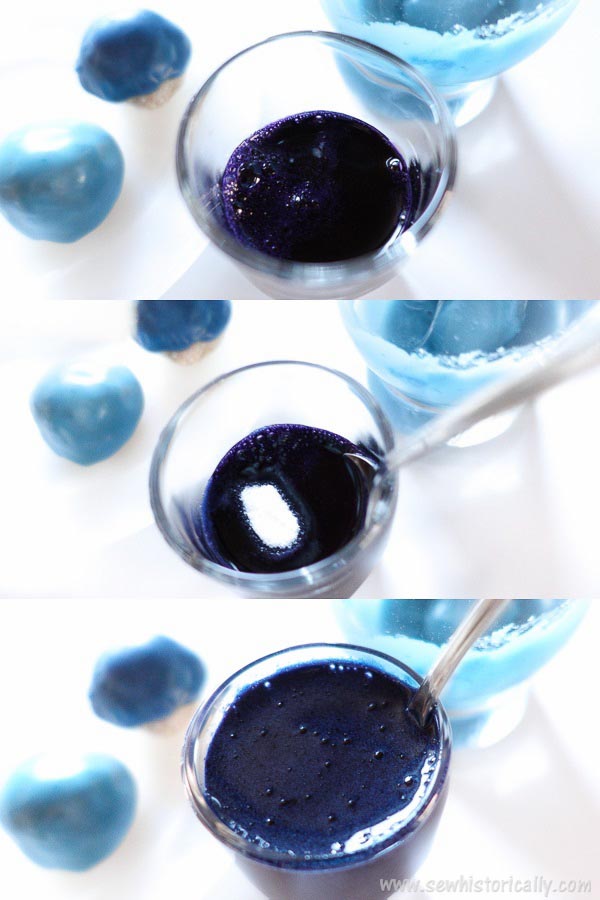
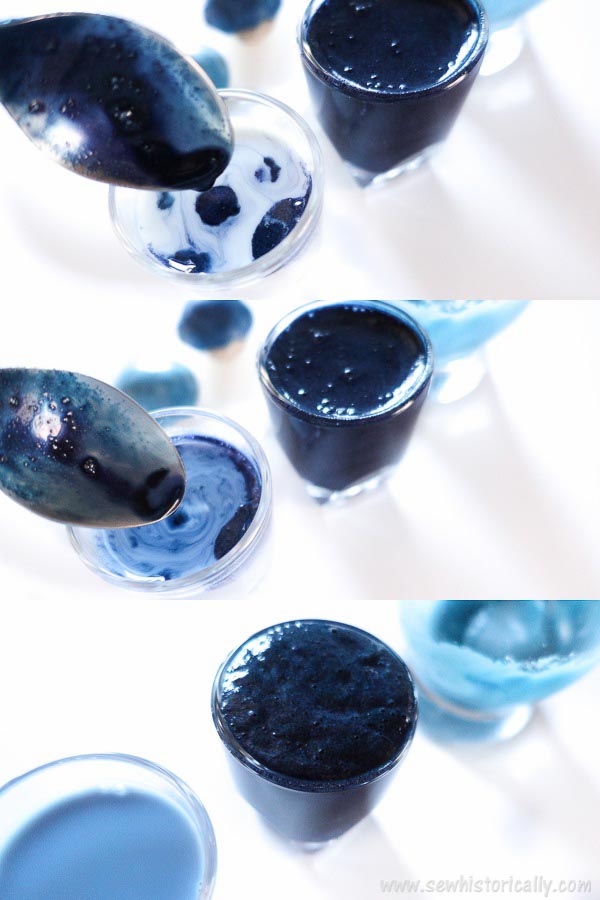
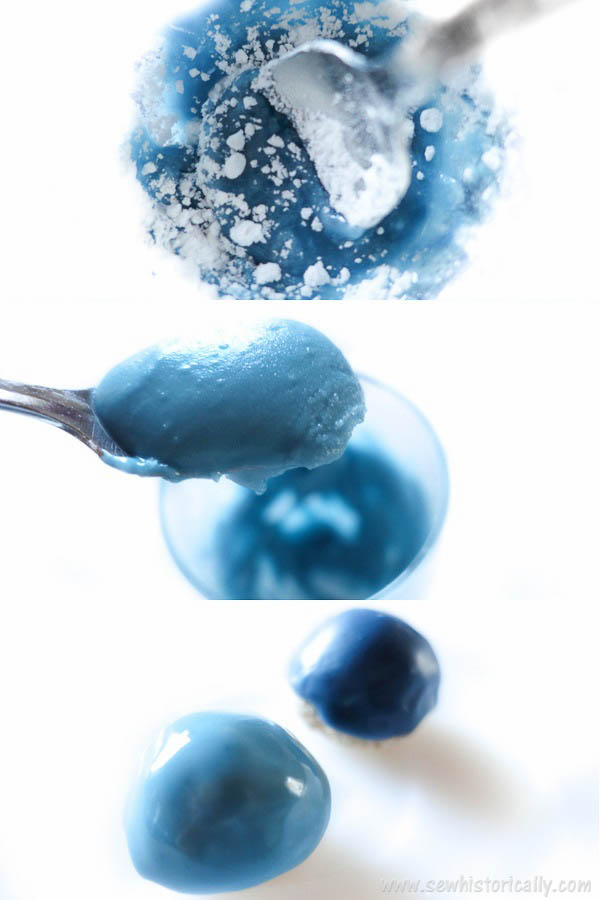
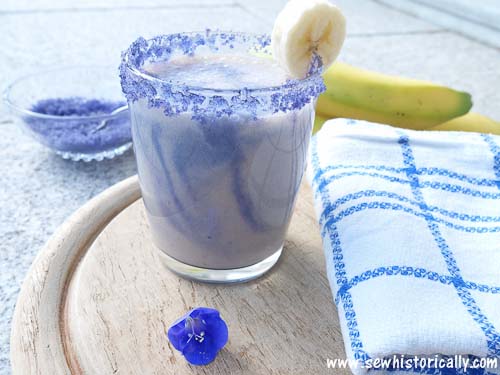
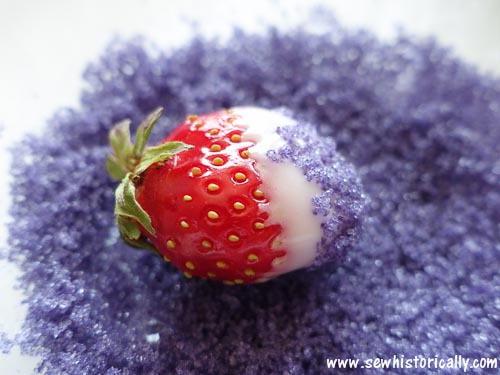
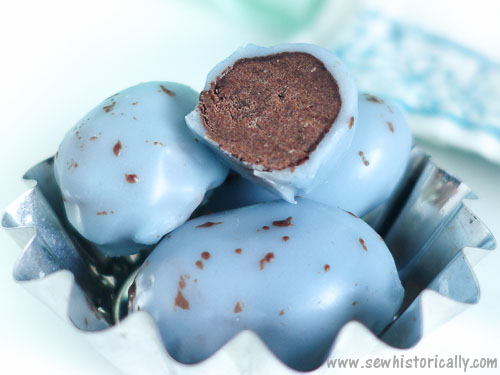
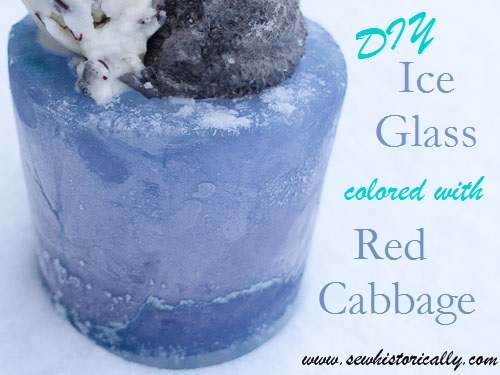
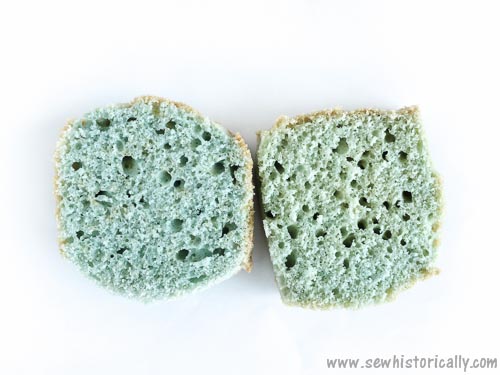
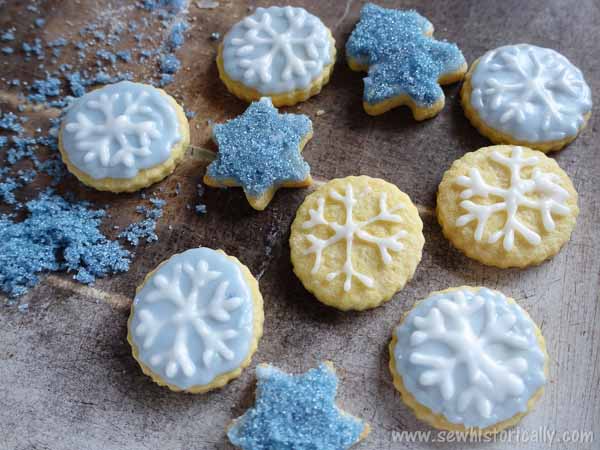
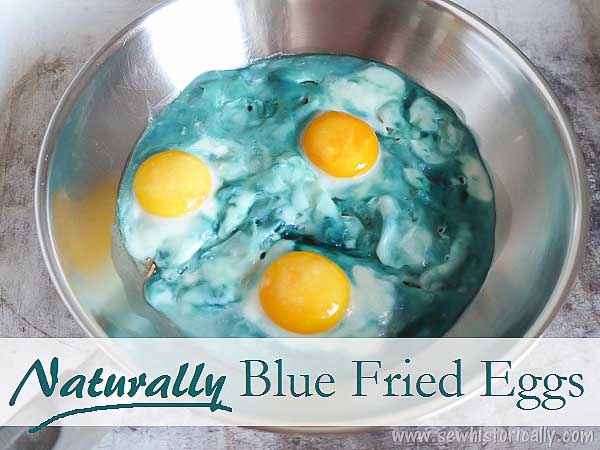
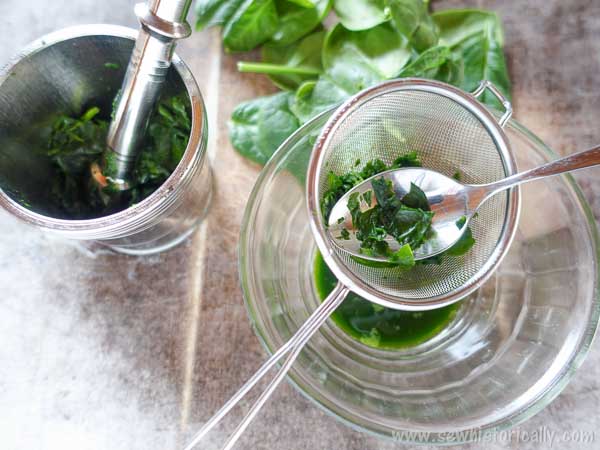
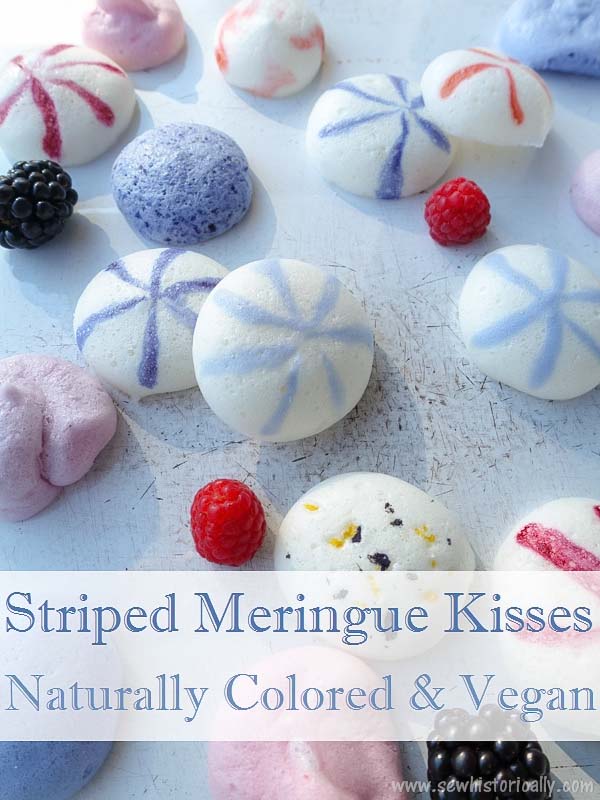

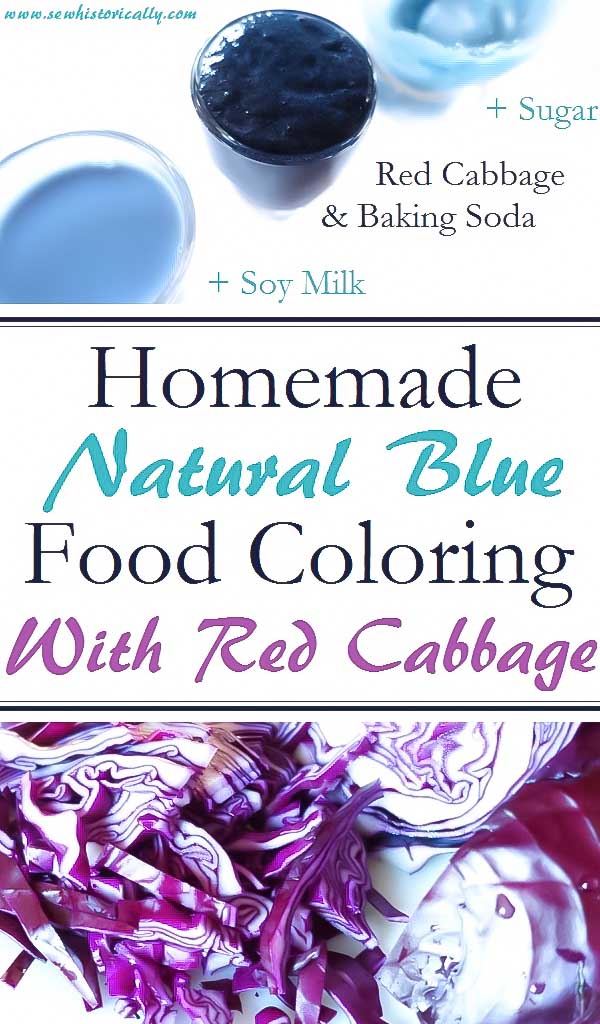
This is great and such a beautiful blue too. Thank you for sharing with us at Funtastic Friday!
I’m also still fascinated by that beautiful blue. 🙂 I never would’ve thought that it’s possible to make naturally colored blue drinks and ice cream!
That’s amazing, I thought it would change the taste. It seems red cabbage is way more useful than I’d ever realise!
If you’d use too much natural blue food coloring, it will change the taste, e.g. the dark blue sugar hearts, which I made a while ago, taste slightly of red cabbage. But it’s possible to mask the red cabbage taste, e.g. with rum or one drop of organic peppermint oil.
What a great idea!
Thanks for sharing at Creative Mondays last week. I will be featuring you tomorrow on the blog hop.
Thank you for featuring me!
Wow-that’s pretty cool! I would never have thought to do that. Thanks for sharing with us at Funtastic Friday 🙂
Thanks 🙂
What a beautiful blue it turns out too. I’m pinning for future reference!
Thanks for pinning! 🙂
Lovely hues! Love that they’re all-natural too. Thank you for sharing this over at Food Friday! Excited to see what you’ll be sharing next. 😀
Thank you! 😀
After I put the coloring in the frosting how long will the frosting be good for?
Naturally colored blue frosting is best eaten fresh. It’ll keep for 1 or 2 days in the fridge. If you have leftover blue frosting, you could try to freeze it.
It’s so lovely to see a natural recipe for blue food colouring! Thank you so much for sharing it! I love how easy it is to make too. If you have time, please do pop over to my site and share this post with The Hearth and Soul Link Party – it’s the sort of post everyone will love! Have a great weekend!
Thanks, April! 🙂 And thanks for inviting me to your party!
What a great idea, I can’t wait to try it! Thanks so much for sharing with us at Full Plate Thursday and you have a great weekend!
Come Back Soon
Miz Helen
Thanks for stopping by, Helen!
Love it and pinned and shared
Thanks for pinning, Carol!
This is amazing. My grandson loves using food coloring in homemade slime. However, it can get expensive. I love this idea. Thanks for sharing on Sunday’s Best. If you have other colors, please share.
Thanks, Rhonda! 🙂 You can use raw beets for pink, alkanet root for red, berries for pink/ purple, carrots or onion skins for orange/ brown, turmeric for yellow, and spinach, sunflower seeds or matcha for green. However, homemade food coloring is ph-sensitive: If red cabbage dye turns purple or red, add more soda, if it turns green or yellow, add some acid, such as vinegar or lemon juice.
Very interesting! I never would have thought of this, and I’m sure it’s better to use natural food coloring, rather than something synthetic. Thank you for linking up at The Blogger’s Pit Stop. I’m sharing your link on social media.
Carol (“Mimi”) from Home with Mimi
Thanks for sharing, Carol! 😀
How clever! I had no idea it was so easy to make your own food colouring. Thanks for linking it up to #CookBlogShare 😀 Eb x
Thanks, Eb! 😀
That’s so fascinating Lina! Nad I love that it’s ph sensititve too – it’d be great funusing it with children for it to turn pink! #CookBlogShare
Angela x
Thanks, Angela! You can make homemade ph-indicator with red cabbage! Purple red cabbage water turns pink and red when you add an acid, and blue, green and yellow when you add a base.
LOVE this! such a clever idea – the Peachicks would love experimenting with this and changing the colour of it!
Thanks, Midge!
We LOVE natural food dyes. Its a wonderful color – almost periwinkle in the pics.
Thanks for sharing at the party – hope to see you at this week’s party: http://www.jodiefitz.com/2017/08/22/reader-tip-tuesday-party-crafts-recipes/
Its still & growing all week :)…
I tried this but I don’t get the syrup thickness, it’s really liquid. What do I do wring?
Also it turns blue but when I add it to my nicecream it turns back purple. Frustrating ?
And like I said in my post, natural blue food coloring is ph-sensitive, so you can color alkaline food blue, such as sugar or milk, but you can’t use it for acidic food.
Depending on how much water you add and how fresh the cabbage is, it can take longer to boil the purple cabbage water down. Boil the purple water down till it’s syrupy – it can take 30 minutes or even an hour. And the cabbage water thickens again when you add the baking soda.
hi i tried it . I want deep/dark blue on fondant. But i couldn’t reach deep blue.
Hi, I need more info in order to help you. Is the food coloring that you made dark blue like in the pictures above? What’s in the fondant that you used? Could you dye sugar dark blue? And you could try another red cabbage. I’ve made the food coloring more than once and sometimes the red cabbage is the problem and I don’t get dark blue: when the cabbage wasn’t fresh enough or there was something different in the soil where it grew.
This is so crazy, I’ve never heard of making a food coloring like this before. But it’s a great idea! I’m excited to try it out!
Thanks for stopping by, Heather!
I followed this recipe today. The dye looks blue but when I test it in yogurt it still looks purple. I used the full 1/4 teaspoon baking soda. Any ideas what else I can do? Thanks!
Thanks for trying out the recipe, Christie! 😀 You can add more baking soda if it’s still purple – just add a little at a time. It depends on the cabbage: Sometimes I have to add more baking soda and sometimes less.
Hi, I was wondering if you have tried freezing this and whether you do it before or after adding the baking soda? I’m just wondering if the freezing process affects the colour / alkalinity at all. Thanks!
Hi, I haven’t tried freezing the natural blue food coloring yet but freezing the blue ice cream and blue ice bowls didn’t affect the color – both stayed blue.
Just wondering if you have tried this colouring in a buttercream icing? Or if you think it would work? Thanks!
Yes, I’ve used the coloring to make baby blue German buttercream frosting.
Can l also use it in cocktail or micktail. Am looking for a recipe for a blue mocktail – non alcoholic.
Keep in mind that natural blue food dye is ph-sensitive, so the mocktail shouldn’t contain acid like lemon juice or most other fruit juices. I’ve already used natural blue food dye to color banana milk and homemade orange liqueur blue (recipes are in the post).
If you find a recipe for a blue mocktail, please share it! 🙂
Hi made this with the intention to use it for a blue jelly pool. When i added it to the gelatin mixture it was blue at the bottom.but as soon as i mixed it it turned back to purple… i then added a green tea bag and it went to a grey colour…. i then tried again with stevia instead of honey incase it was the sweetener that made it turn back to alkaline but it still didnt work so i guess its the gelatine reacting? Any advice as to how i can make blue jelly?
Is there some acid in the gelatin mixture you used? Because pure gelatin is not acidic – I always use organic gelatin sheets. Here I made natural blue jelly with butterfly pea tea and gelatin. And you can also use the natural blue food coloring as pH indicator – like I did for my blue cake experiment – by mixing a small amount of each ingredient you want to add to your jelly with the blue food coloring: then you can immediately spot what is acidic and replace that ingredient with a more alkaline ingredient.